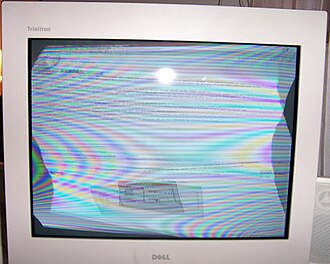Walk into any serious hacker’s den, and amid the mechanical keyboards, vintage ThinkPads, and racks of open metal, you might spot it:
A bulky, humming CRT monitor. Not as a novelty, not as décor—but plugged in, alive, and still in use.
What gives?
In a world of 8K OLEDs, paper-thin panels, and retina displays, the cathode ray tube should be obsolete. Instead, it has become a symbol—a defiant aesthetic, a tactile memory, and a statement of values in a culture increasingly obsessed with sleekness and disposability.
This isn’t just nostalgia. This is tech culture with a spine.
The glow that speaks
CRTs weren’t made to be beautiful—but they are. The phosphor glow of green-on-black text, the slight flicker, the depth of light that’s not quite replicated by any LED or LCD—that’s not just an image. That’s a presence.
When a hacker sees that glow, something clicks.
It's not just aesthetics. It's psychological immersion. The screen feels closer, more alive, like it's part of the machine’s soul.
Cyberpunk fiction and early hacking culture understood this. From Neuromancer to Ghost in the Shell, the interface was never clean. It was gritty, glowing, buzzing. Reality and data weren’t separated by glossy UI. They were fused together in phosphor and noise.
Tactile truth in a virtual world
CRTs remind us of a time when machines were tangible. They made noise. They gave off heat. They hummed with energy. A hacker interacting with a CRT isn't just clicking icons—they're wiring neurons into circuits. There’s resistance, feedback, grit.
That’s something modern UI design smooths over. Too smooth.
The world of Apple Store minimalism, swipe gestures, and pastel UX has its place—but for the hacker, it’s often too sterile. Too manipulated. Too fake.
CRTs bring back the rawness of computing. The days of writing code without knowing if it would compile. Of reading manpages late at night under a desk lamp. Of living inside the terminal, where control meant command, not drag-and-drop.
A culture of rebellion
The CRT is not just a tool. It’s a signal. A cultural artifact. It tells others:
I don’t chase trends. I master systems.
I don’t need the new. I understand the old.
I’m here to build, not consume.
That aligns perfectly with the cyberpunk ethos—high tech, low life. Subvert the system. Modify everything. Own your tools or be owned by them.
In this light, a CRT isn’t retro—it’s radical.
The future is not flat
Ironically, the further we go into a hyperconnected world of ambient AI, ubiquitous tracking, and AR overlays, the more hackers and creatives retreat into intentional environments—places where they choose the interface, rather than having it chosen for them.
CRTs are a part of that. So is Linux. So are text editors, local-first software, self-hosted servers, and zines printed on dead trees.
Tech is not just function. It’s identity.
And in a world trying to make everything invisible, the CRT remains proudly visible. Loud. Glowing. Glitchy. And full of character.
Final word
CRTs are not coming back to Best Buy. They don’t need to. They’re alive in the underground—in hacker basements, e-waste rescues, and dusty labs where code still rules.
So next time you see that green-on-black glow or the scanlines rolling across a BBS login screen, don’t laugh. Look closer.
That glow isn’t just old tech.
It’s a philosophy.
And it’s still booting up.
Refs:
Why CRT TVs Are IMPORTANT for Retro Gaming
Ads:






